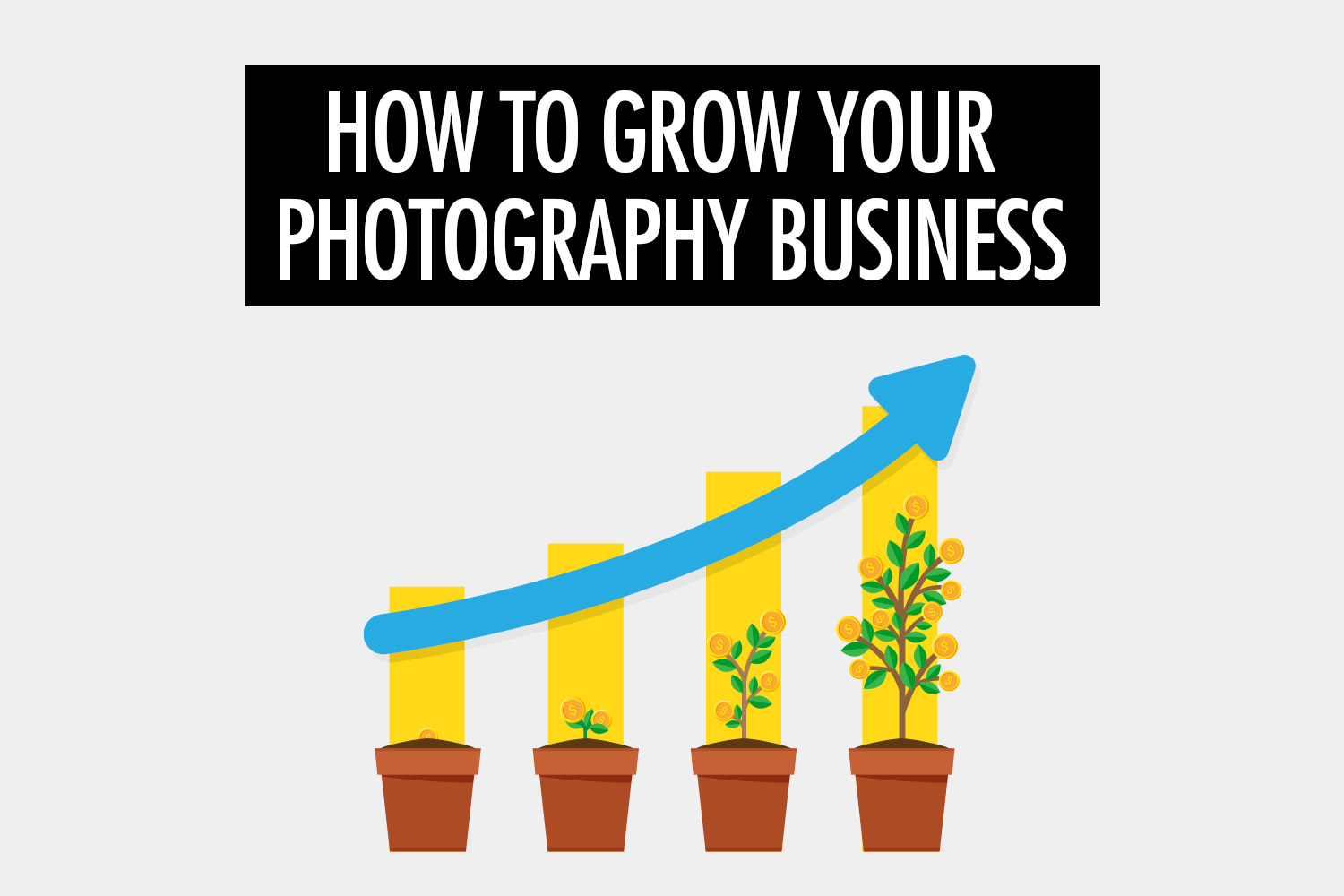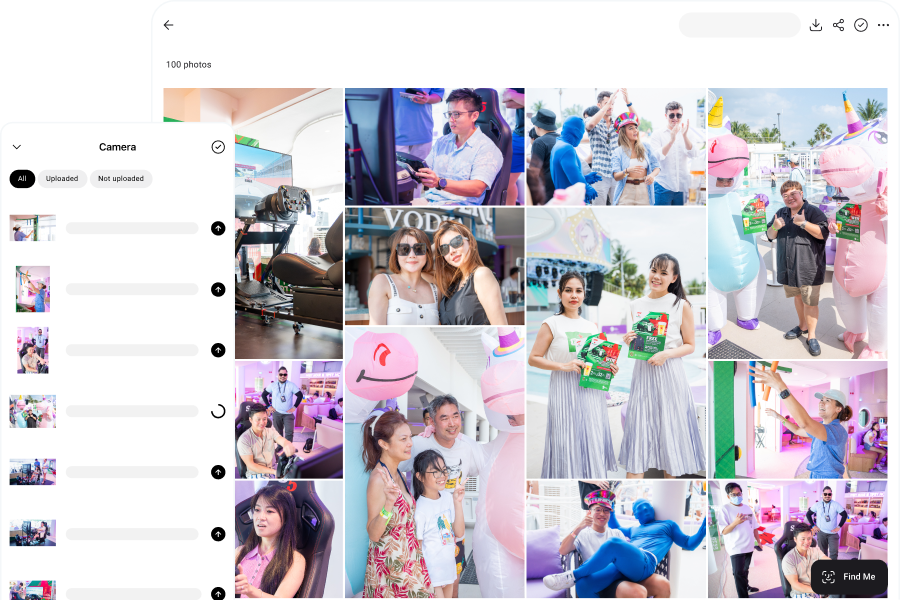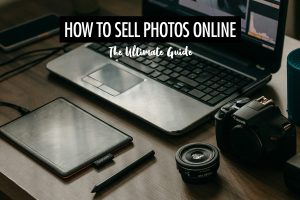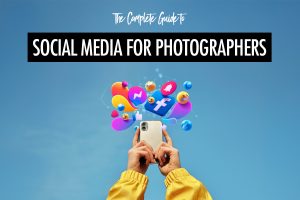The hardest part of running a photography business isn’t taking photos—that’s the fun and creative part that we all enjoy, and why many of us start in the first place.
It’s the business part of running a photography business that’s hard.
We know many photographers who struggle with marketing, sales and even creating proper packages for their services.
Running a business is something that can take many years to learn. I know because I’ve been doing exactly that for the past 10 years.
It took a long time for me to get it right, and I’m still learning all the time for our services business—where we provide photo booth and event photography services.
We started the business in Singapore in 2016, and we finally opened our second branch in Thailand in 2023. So it has been a long journey, and there’s an even longer journey ahead.
But I want to share some of my hard-earned lessons with you—and more importantly, the basic principles that you can use to think about your own photography business.
And to make it more actionable, I’m going to present them as the 10 ways that you can grow your photography business with.
That way, you can start implementing them in your own business, and see the difference that you can make.
Let’s begin.
1. Differentiate Yourself From Your Competitors
The single most important thing that photographers (and business owners in general) struggle with is understanding how they can differentiate themselves.
In other words, what sets you apart from every other photographer in the world?
More importantly, why should a client work with you instead of someone else?
What trips most people up is that they try to differentiate themselves in a way that isn’t unique.
For example, you could say that you take great photos with the best equipment. The problem is that everyone else is saying the same thing, so that doesn’t really set you apart.
You can still get clients that way, but you’re just making it harder to market yourself.
At our services business, one of our key points of differentiation is speed. In everything that we do, we try to be faster than everyone else.
This has important implications for how we run our photography business, because we have to think about what speed means at every customer touchpoint.
For example, speed means that we’re extremely quick to respond to any enquiries, and to reply to our clients’ emails and texts.
It means that we edit and deliver the photos within a short turnaround time, without compromising quality.
It’s also why we built Honcho with features like live sharing, so that guests can get their photos immediately—right after it’s taken by our photographers.
Our point of differentiation is a strategic choice that we optimize our whole company around.
Yours could be a distinct visual style, a unique way of presenting your work or any of the million possibilities.
Don’t be disheartened if it isn’t clear what your point of differentiation is right now, because it’s a process of discovery.
But it does mean that you have to start thinking about it.
2. Generate Word-of-Mouth Marketing
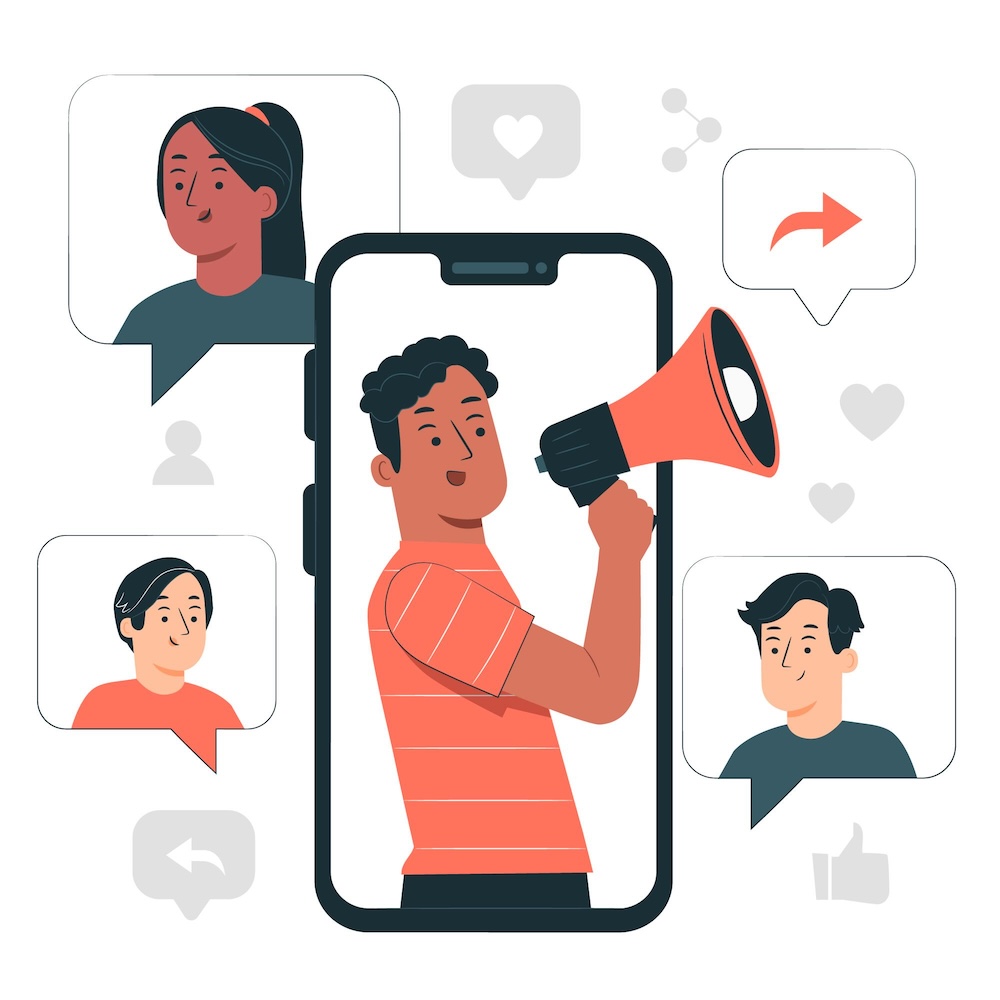
I’ve found it incredibly useful to think about how to get clients by word-of-mouth, because it forces you to think about how to make your photography business stand out.
That’s because word-of-mouth only happens when your business is remarkable enough for people to want to talk about it.
What are some ways that you can go above and beyond to delight your clients?
For example, you could surprise your wedding clients with a photo book, showing the best photos from their special day. This would be a meaningful and personal gift that gets them raving to their friends—and it isn’t even that expensive to produce these days.
Or you could make the effort to edit and deliver the photos as quickly as you can, while your clients are still feeling excited about their event. That’s what we do, as one of our key points of differentiation.
One of the most effective methods we’ve found is to generate word-of-mouth through the unique features that we provide with Honcho—that make every event or wedding more exciting.
Honcho makes it simple for us to create a live slideshow of the photos, which can be shown on a large screen at the venue. Since the photos are updated in real-time, guests feel the excitement of seeing themselves on the large screen.
It creates buzz at the event and gets people talking about our company.
3. Get Leads at Your Events
Every shoot is an opportunity for you to showcase what you do best, and to get interest in your services.
This is especially the case for event and wedding photography—we get 2 to 3 guests asking for our name cards at every event that we cover.
And while handing them a name card is a good start, it’s too passive for our liking.
Someone might be genuinely interested in your service and fully intent to reach out. Then life gets in the way and it slips their mind.
That’s why we go one step further, and ask for their contact information—so that we can get the conversation started ourselves.
Ever since we started using Honcho for our events, we’ve gotten even more leads at every event.
There are a couple of reasons for that.
First, Honcho allows us to provide a remarkable experience, with live sharing features that engage our guests.
It allows us to share the photos with the guests right away—all they need to do is scan a QR code to access those photos.
Because we’re solving a pain point for the guests—they want to get their photos too—and doing it in such a simple way, they want to bring that experience to their own events.
The second reason is that Honcho gives us the opportunity to start more interactions with the guests.
After our photographer takes a photo, we walk up to the guests to show them that photo with a tablet—and ask them if they want to download it.
It gives us a powerful reason to talk to them, and answer any questions they might have about our services.
Often, that conversation leads to a new potential client.
As a photographer, think about the interactions that you can start with the guests and how you can do it in a natural way.
You have something that is important to them and that they want to get their hands on. And that is the beautiful photo that you’ve just taken of them.
Use that as your conversation starter and start getting more leads at your events.
4. Form Partnerships
As a photographer, you have a valuable skill that is complementary to many other businesses.
That means opportunities to form partnerships and to grow your businesses together.
For example, you can partner a videographer, so that you can provide photography and videography services together.
Many clients are looking for all-inclusive packages, so that they can reduce the overhead of managing multiple vendors. This partnership can solve that problem for them.
Alternatively, you can partner wedding and event planners—they’re always looking for reliable vendors to work with.
If you provide a consistently high level of service, that will lead to a relationship of mutual trust.
The truth is, partnerships are hard to get right and many will lead to dead ends.
On top of that, too many people think of partnerships like they’re handouts.
That was the mistake I made when we first started our photography business.
We had high hopes for every new partnership that we formed, expecting them to double our sales.
Years of experience have taught us otherwise.
There is no single partnership that can save your business or increase your business tenfold.
Instead, it’s the sum of all of your partnerships that will make a difference to your business.
In addition, the best partnerships are the ones that happen naturally.
You might meet someone and find that there’s a great fit—whether in personality, beliefs or work ethic. Over time, you find ways to work more closely together.
For us, the partnerships that never led to anything were the ones that started with a formality, like the signing of an agreement.
Just start working together. And if both of you enjoy it, find more ways to work together in the future.
That’s all there is to it.
5. Have a Social Media Presence

I’ve read so many articles about how having a social media presence will magically bring you more clients.
While that can be true, many people attribute it to the wrong reason.
They think of social media as a top-of-the-funnel way of getting more leads by raising awareness of your photography business—which you can then turn into clients.
Unfortunately, social media very much favors the early movers. The earlier you get on a platform, the easier it is to build a large following.
This is no longer the case for any major social media platform, like Instagram or TikTok.
That means that it’s really hard to build awareness with social media. It requires constant effort and a long timeline—just like search engine optimization (SEO).
Because of that, many people become discouraged about investing in this channel.
Let me suggest a different way to think about this.
Social media is the middle of the funnel, not the top of the funnel.
It’s not a great way to raise awareness of your business.
But it’s a great way for people who already know about your business, to find out more about you.
In that way, it’s not that different from any other sales materials, like case studies or testimonials.
It helps you increase your conversion rate of leads to clients.
And that’s one of the only two ways to increase your sales—the other is to increase the number of leads.
Now, that’s very much worth investing in.
6. Invest in SEO
For many businesses, the holy grail is to rank well in Google for important search terms—for example, “photographer in New York”.
It’s so valuable because of the search intent. That is, people searching for that term are likely looking to hire a photographer.
But because it’s valuable, it also means that there’s a lot of competition for it.
That’s why search engine optimization (SEO) is a significant long-term investment, which can take months or years to pay off.
At our services business, we’ve been investing in SEO for several years now—and it now accounts for 38% of the traffic to our website.
It has made a significant impact on our bottom line.
Even so, we still don’t rank well for the super valuable search terms, like “photo booth in Singapore”.
Instead, most of the organic search traffic goes to our blog.
We have over 40 blog articles now, on topics related to photo booths and photography—articles that we believe are useful for anyone looking to hire these services.
By attracting that traffic, some of them will convert into leads—and hopefully, become clients down the line.
SEO is such a big topic that there’s just too much to cover in a single article, but there are many resources with valuable information out there.
Just understand that SEO is an ongoing investment that you have to commit to, in order for it to work for your photography business.
7. Run Ads on Google and Social Media
In the short term, ads are probably the fastest way to build up your pipeline of leads.
Nothing comes free.
Social media and SEO might be free in terms of money, but they require significant investments in time—with no guarantee of results.
For us, ads contribute to a significant chunk of our clients, even though we also invest in social media and SEO.
That’s because we believe in the importance of diversifying our channels, instead of becoming over reliant on a single channel for the majority of our business.
Start with a small ad budget and experiment with different platforms, ad copy and landing pages.
It might seem like a lot, but you can read this step-by-step guide on setting up Google ads—and get your own ads running within a day.
Just don’t hire an agency to handle a small ad budget, because it doesn’t make economic sense.
8. Cold Email the Right People
I know that many of us feel uncomfortable about cold emails. I’d admit that I used to feel that way too.
But I also love it when someone cold emails me well, with a relevant service at the right time.
Unfortunately, most people adopt a spray and pray approach, sending irrelevant offers to the wrong people.
Don’t be that person. Know exactly who you want to reach out to, and the specific value that you’re offering them.
I’ve read too many cold emails with paragraphs of text about how great they are, and not a single mention about what they can do for me.
You want to do the exact opposite. Spend less time talking about yourself, and more time talking about the person you’re reaching out to.
While we don’t cold email frequently, we do it from time to time with great effectiveness— especially if we can identify a clear target audience and understand what we can bring to them.
In other words, we do it when we know that we can talk in their language, to maximize our chances of success.
For instance, we cold emailed event planners to introduce the unique services that we could bring to their events.
Because event planners are always looking for new and innovative experiences, it was right up their alley.
Some of them have even become our long-term partners.
As much as you might dislike it, cold emails work—that’s why some of the largest companies have whole departments to do it. They call it prospecting.
Do it well and you have a potential superpower to charge up your business pipeline.
9. Respond Quickly

We’ve spent a lot of time talking about ways to generate more leads for your photography business.
Now, let’s talk about what happens after that.
This point is about one of my biggest pet peeves—failing to follow through.
If you’ve spent all that effort in getting a lead, why waste it?
But I’ve lost count of the number of times a business has taken forever to get back to me about an enquiry.
Every time a business takes a long time to respond, they’re leaving money on the table.
Speed of response matters—a lot.
The statistics bear it out—fast responders win up to 50% of sales.
From my own experience, we close many deals simply because we were the quickest to get the conversation started.
It makes sense because most people are lazy.
You don’t want to have the same discussion with multiple service providers, so you pick the first one that’s good enough.
Be that first one that’s good enough.
10. Always Follow Up
So, you’ve done everything right so far.
You’ve gotten the lead, responded quickly—then, nothing.
What gives?
People are busy and have other things to think about, that’s what.
Just because a lead has stopped responding doesn’t mean that they’re no longer interested.
And if you give up right away, you’re leaving so much money on the table.
By my estimation, we close 30% to 40% of our deals by following up.
Put another way—if we don’t follow up, we’ll immediately lose 30% to 40% of our deals.
That’s pretty crazy, isn’t it?
In addition, we try to make each follow up email useful in its own right.
So each follow up email will contain new information to help the lead make a better decision—for example, testimonials or case studies.
And I understand that there’s a fine line between being persistent and being annoying. So we try to find that balance.
But it doesn’t cost you anything—so please, always follow up.
Conclusion
Let me end by talking about one of the biggest lessons I had to learn in my experience as an entrepreneur.
There are no magic bullets in business.
There is no one simple trick, tactic or system that can bring you all the success you’re looking for.
The problem is that we want to believe that it exists, because it’ll make life so much easier.
And there are countless experts and gurus who are more than happy to sell that dream, so that we’ll buy their courses and consultation hours.
And so, we waste our time and money looking for magic bullets—resources that we could have spent building our businesses the right way.
The reality is that successful businesses are built in small increments.
It’s not about the big win. It’s about the accumulation of all your small wins.
Every single point that I’ve talked about in this article, we’ve implemented in our own photography business.
But none of them, on their own, have been sufficient to bring us to where we are today.
It’s the sum of all of our efforts that matter.
Each change that you make could bring, perhaps, a 3% to 5% increment to your bottom line.
If you add all of them up over a year, that becomes a 20% to 30% growth.
That’s significant for a service business—it’s the difference between breaking even or making a nice profit.
Or it’s the difference between doing well or doing great.
And just like interest, it compounds—year over year.
So start working on your small wins.

